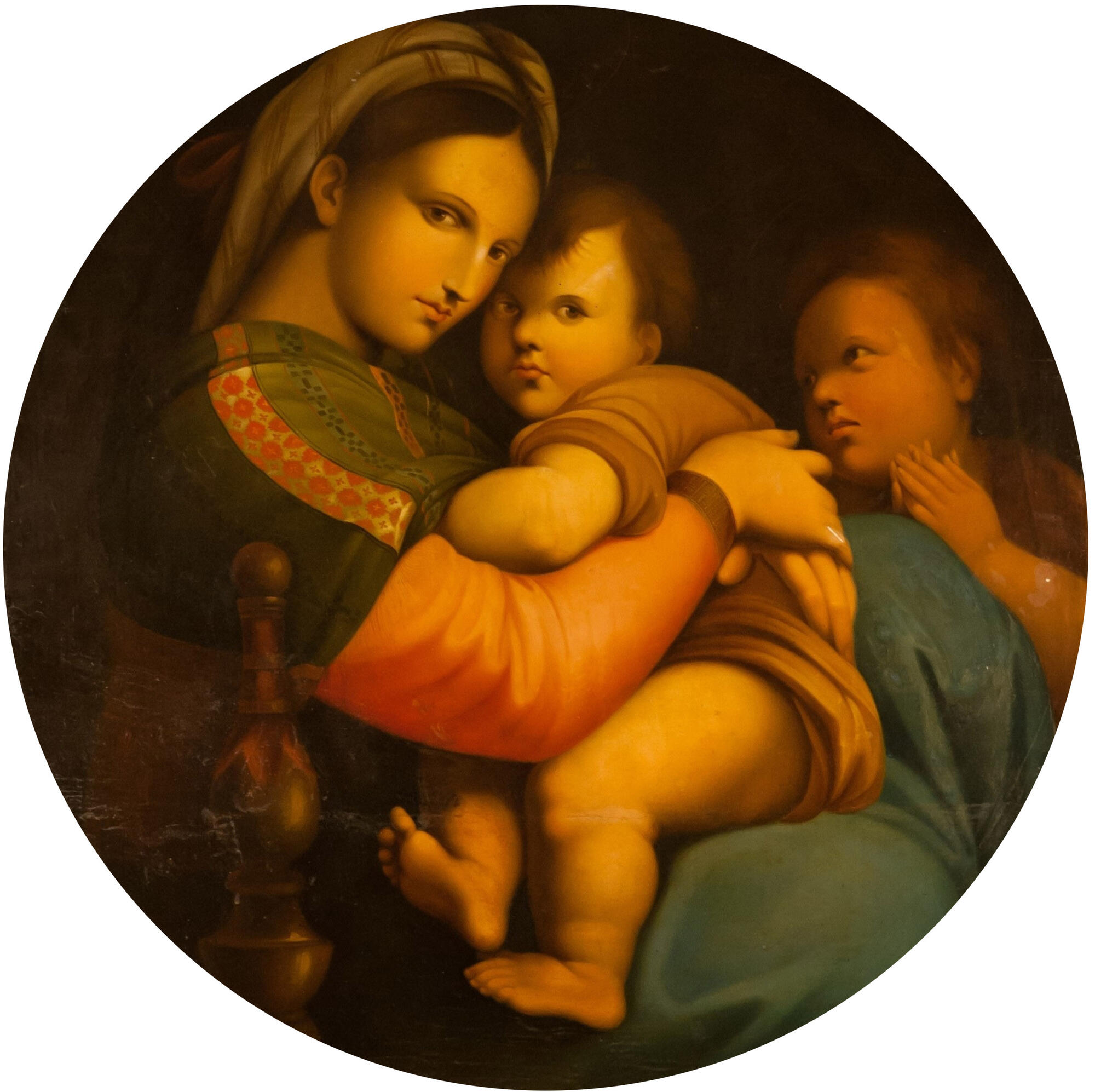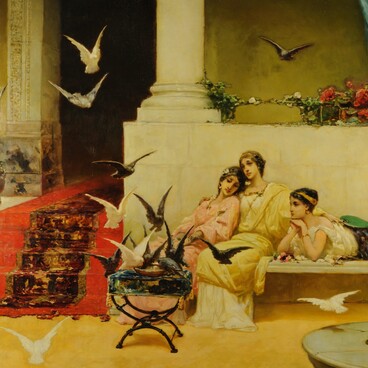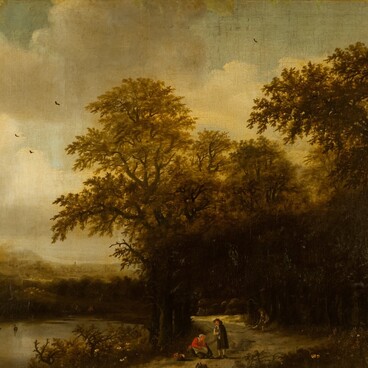It was customary for Russian artist to make copies of Italian Renaissance paintings for the palaces of Tsars. ‘Madonna of the Chair’ by Raphael (b. 1483 – d. 1520) was copied for the Romanov palaces in Livadia and Saint Petersburg.
The original ‘Madonna of the Chair’ dates to ca. 1513-1514. It is a tondo 71 cm (28 in) in diameter, oil on panel, on display in Palazzo Pitti in Florence.
It is known that the copy from Alupka museum-preserve was once held in the Academy of Fine Arts is Saint Petersburg. It has been on display in the State Bedroom since Massandra palace became part of Alupka museum-preserve in 1992.
The painting depicts Virgin Mary embracing the Child Christ, while the young John the Baptist is looking at them with devotion. ‘Madonna of the Chair’ has been greatly admired in Italy and in Russia as well. Leo Tolstoy always kept a miniature copy of Raphael’s masterpiece close at hand. It was given to him by his aunt when he went to the Crimean war. Fyodor Dostoevsky described himself standing in awe when he saw “Madonna of the Chair” in Florence.
It is not just the original tondo composition that draws the viewer’s attention, but a very rare technique of an oil painting on a copper plate. Despite its Italian origin, it only gained popularity in the 16th century with foreign artists who came to Italy to work.
Since a copper plate is rather heavy-weight, it has to be relatively small. Copper plates were used to help preserve the paintings for a longer period of time: the paint layer on such plates does not absorb moisture and has a special glossy quality to it. Moreover, using copper plates would let painters skip the process of mixing and applying the sizing and ground on canvas.
By the middle of the 16th century it had become the rule of thumb to cover the ground with colored priming which in Italy were usually done in red or brown, close in color to copper.
Usually painters on copper were not particularly whimsical about choosing their subjects: there were religious, mythological, allegorical scenes, still-life, portraits, landscapes and most of all copies from famous paintings.
The original ‘Madonna of the Chair’ dates to ca. 1513-1514. It is a tondo 71 cm (28 in) in diameter, oil on panel, on display in Palazzo Pitti in Florence.
It is known that the copy from Alupka museum-preserve was once held in the Academy of Fine Arts is Saint Petersburg. It has been on display in the State Bedroom since Massandra palace became part of Alupka museum-preserve in 1992.
The painting depicts Virgin Mary embracing the Child Christ, while the young John the Baptist is looking at them with devotion. ‘Madonna of the Chair’ has been greatly admired in Italy and in Russia as well. Leo Tolstoy always kept a miniature copy of Raphael’s masterpiece close at hand. It was given to him by his aunt when he went to the Crimean war. Fyodor Dostoevsky described himself standing in awe when he saw “Madonna of the Chair” in Florence.
It is not just the original tondo composition that draws the viewer’s attention, but a very rare technique of an oil painting on a copper plate. Despite its Italian origin, it only gained popularity in the 16th century with foreign artists who came to Italy to work.
Since a copper plate is rather heavy-weight, it has to be relatively small. Copper plates were used to help preserve the paintings for a longer period of time: the paint layer on such plates does not absorb moisture and has a special glossy quality to it. Moreover, using copper plates would let painters skip the process of mixing and applying the sizing and ground on canvas.
By the middle of the 16th century it had become the rule of thumb to cover the ground with colored priming which in Italy were usually done in red or brown, close in color to copper.
Usually painters on copper were not particularly whimsical about choosing their subjects: there were religious, mythological, allegorical scenes, still-life, portraits, landscapes and most of all copies from famous paintings.



